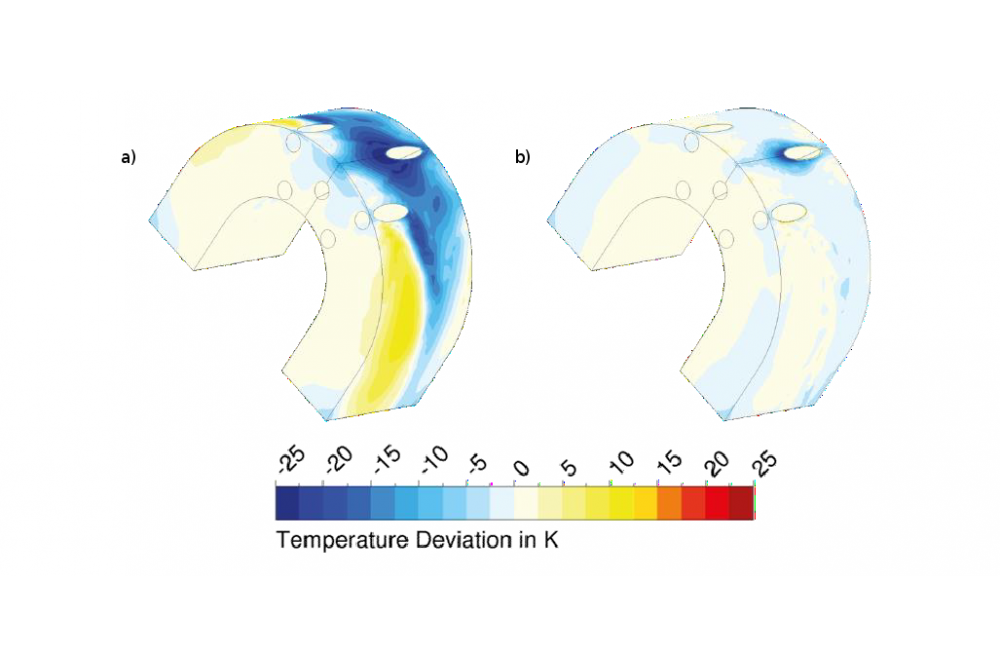Numerical Prediction of Thermal Turbine Blade Behavior
Einleitung
In order to obtain high efficiencies in modern jet engines, turbine inlet temperatures substantially exceed thermal material resilience thresholds. That is why complex cooling designs are employed to ensure safe operation of the engine even under very high gas temperatures. The development of novel high pressure turbine blades necessitates a numerical validation of the cooling design in order to guarantee on the one hand that the thermal loading capacity of the blade material is not being exceeded and on the other hand that there are no penalties on turbine efficiency due to waste of cooling air.
Methoden
In order to numerically predict temperature distributions in cooled turbine blades, conjugate heat transfer simulations are a promising tool that involves a coupling between the flow computations in the fluid and the heat conduction calculations of the solid domain. Because of the additional solid mesh and, especially, due to the large time scale disparity of the heat transportation processes between the fluid and the solid domain, CHT simulations require increased computational resources.
Ergebnisse
Project 85 (May 2016 – July 2017)
The modelling strategy of complex turbine cooling methods was investigated and tested. This included mesh sensitivity studies and the influence of turbulence models. Furthermore, the sensitivity of film cooling was investigated in more detail. The numerically predicted film cooling and heat transfer behaviour of a turbine blade have been analysed and compared with experimental results.
Project 550 (August 2017 – July 2018)
In a next step, conjugate heat transfer simulations have been implemented in order to take into account the thermal back coupling between fluid and solid domain. It was found that the high surface temperature values due to direct hot gas exposure are substantially smoothened out by the internal solid heat conduction. Moreover, film cooling proved to be more efficient due to the additional heat absorbed by the cooling hole walls.
Project 854 (August 2018 – July 2019)
With regard to the thermal predictions of turbine blades by means of conjugate heat transfer simulations, the influence of different parameters affecting the cooling design was investigated. Among these parameters were the rotation number, the blowing ratio and the main flow Reynolds number.
Project 1129 (August 2019 – July 2020)
A method to reduce the occurring uncertainties by means of an artificial thermal resistance at the interface between fluid and solid domain was implemented. It was shown that the temperature deviations between numerical predictions and experiment can be substantially reduced in this way.
Diskussion
It was shown how many different parameters and modelling assumptions contribute to the numerical errors of thermal predictions by means of conjugate heat transfer simulations. The Figure presented above shows the surface temperature deviation of the baseline simulation with measurement data (a). It can be seen that close to the film cooling hole exits, the wall temperature is under-estimated by the numerical prediction (by up to 30 K) while further downstream a region of too high wall temperatures is found. By means of an additional thermal resistance applied at the interface between fluid and solid domain, the deviations between numerical prediction and experiment can be substantially improved. As shown in Figure (b), the temperature deviations are reduced to below 5 K except for the region directly at the hole exit.




